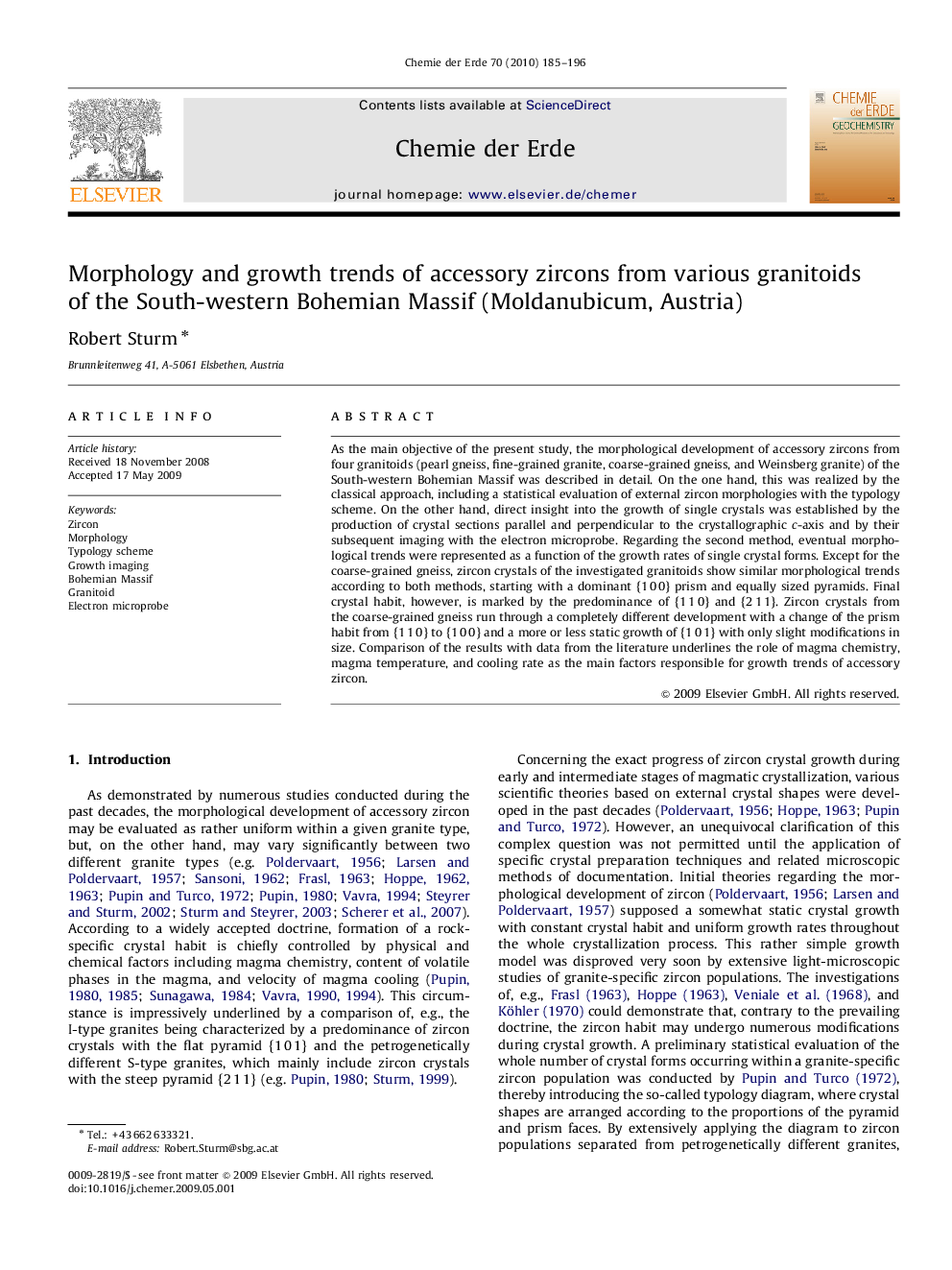| Article ID | Journal | Published Year | Pages | File Type |
|---|---|---|---|---|
| 4407063 | Chemie der Erde - Geochemistry | 2010 | 12 Pages |
As the main objective of the present study, the morphological development of accessory zircons from four granitoids (pearl gneiss, fine-grained granite, coarse-grained gneiss, and Weinsberg granite) of the South-western Bohemian Massif was described in detail. On the one hand, this was realized by the classical approach, including a statistical evaluation of external zircon morphologies with the typology scheme. On the other hand, direct insight into the growth of single crystals was established by the production of crystal sections parallel and perpendicular to the crystallographic c-axis and by their subsequent imaging with the electron microprobe. Regarding the second method, eventual morphological trends were represented as a function of the growth rates of single crystal forms. Except for the coarse-grained gneiss, zircon crystals of the investigated granitoids show similar morphological trends according to both methods, starting with a dominant {1 0 0} prism and equally sized pyramids. Final crystal habit, however, is marked by the predominance of {1 1 0} and {2 1 1}. Zircon crystals from the coarse-grained gneiss run through a completely different development with a change of the prism habit from {1 1 0} to {1 0 0} and a more or less static growth of {1 0 1} with only slight modifications in size. Comparison of the results with data from the literature underlines the role of magma chemistry, magma temperature, and cooling rate as the main factors responsible for growth trends of accessory zircon.
